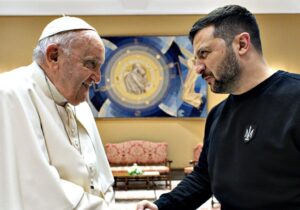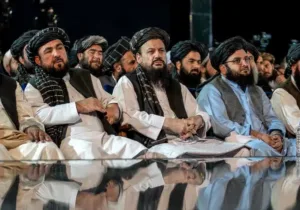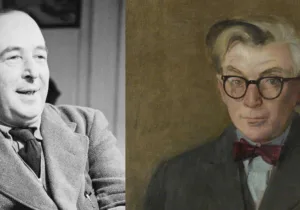Revolutionaries distinguish themselves from criminals, claiming a patriotic vision for their country. But, is this really the case? Can we really think about ideologues such as Lenin, Robespierre, or Mao as loving their countries? The answer is “no” for two reasons. The first is that they sought to erase the culture and history of their countries and replace it with something entirely different. That is not patriotism.
The second reason, and the one that this series of essays focuses on, is that they used ugly, vindictive violence against their own countrymen in pursuit of a revolutionary future. Revolutionary violence does not meet the standards of just war statecraft.
This essay is the fourth and last in a series that looks at the moral justifications for saying “no” to a policy or regime and the force or violence that accompanies that “no.” The arguments are adapted from my forthcoming book, A Basic Guide to The Just War Tradition: Christian Foundations and Practices. We first looked at the non-violent direct action of Martin Luther King, Jr., which was a people power-form of force focused on changing unjust laws or the unjust application of decent laws. The second essay differentiated collective efforts to stop tyranny with terrorism, differentiating the effort of Dietrich Bonhoeffer and others to stop Nazi tyranny from the immoral terrorism of Colombia’s ELN. The third essay considered the moral and legal framework for the American War for Independence. That essay foreshadowed this one because of the frequent mistake labeling the American “revolution of ideas” a violent Revolution akin to that in France a decade later.
Just statecraft principles are vital to help us make important distinctions about the use of force. The principles of legitimate authority, just cause, and right intention provide the essential framework for deciding whether or not the use of force is moral in a given case. Providence has spent the last decade providing articles and events laying out the basic rationale of just war statecraft. These principles inform the important distinction between force and violence.
In the just war tradition, violence is unlawful, excessive, and vindictive. In contrast, force is applied within the boundaries of the law, it is restrained, it is motivated by legitimate concerns for order and justice, and it is wielded by proper authorities. We have terms for hateful, vengeful violence, even if it is at the hands of proper authorities: child abuse, police brutality, and the like. Soldiers should fight with restraint and honor and if they do not, for instance if they engage in unnecessary killing, torture, rapine, and plunder, they have crossed the line from legitimate force to illegitimate and illegal violence. Thus, when we consider specific acts of force or violence, it will be important for us to consider this distinction and look at the elements of authority, just cause, and right intention when we consider courses of action.
This leads us to considerations of revolutionary violence. A revolution is a political movement that is typically installed by force. Revolutionaries seek a total break with the past and the imposition of a new ideological blueprint for law and society. Revolutions, by definition, mean the complete destruction of the previous social and political order and the imposition of a new order based on a novel ideology.
Two examples that epitomize the concept of revolution are the French and Russian Revolutions. The French Revolution (1789-1799) devastated the country with its guillotine executions of public officials, the destruction of the monarchy and the social structure of nobility, the Church, and lower estates. It was lawless, chaotic mob violence and most of the Revolution’s leaders themselves died as a result. In the Russian Revolution of 1917, Lenin and his Bolshevik Communists seized power through societal upheaval and violence, again upending not only the monarchy but all of society’s institutions, including religious ones. In Russia, the Revolution of 1917 and subsequent ‘Great Terror’ were responsible for the deaths of anywhere from nine million to thirty million people.
Revolutions typically follow a standard blueprint. First, a small cadre of elites seize power, even if they are carried to victory on the shoulders of an uprising of the masses. Then, that elite imposes its utopian ideology on the country by smashing existing social conventions, laws, and structures and crushing dissent. Typically, much of the populace must be re-educated and a new dictator emerges to keep the revolution moving forward: Ayatollah Khomeini, Joseph Stalin, Mao Zedong, and Pol Pot are all examples of these type of revolutionary leaders. In literature, their tactics resemble the diabolical playbook of ‘Big Brother’ in Orwell’s 1984 and of N.I.C.E. in the third volume of C.S. Lewis’ space trilogy, That Hideous Strength. Orwell and Lewis were simply modeling their villains on the Russian Revolution and, later, on the rise of Hitler and Germany’s National Socialists.
History records a number of other recent examples. For instance, after the Chinese Communists violently seized power in 1949, they came to realize that there were many existing societal structures that created alternative sources of authority and free thinking. Their solution was the so-called Cultural Revolution and Great Leap Forward, which was really the enacting of their radical ideological agenda that included placing opponents in concentration camps alongside the killing or starving of an estimated 20-60 million people. Cambodia’s ‘Killing Fields’ in the 1970s evolved into a similar revolution, designed to take the country back to ‘Year Zero’ and build a utopian Marxist agrarian society by erasing the upper and middle classes and religion through the brutal tactics of Khmer Rouge. This resulted in the planned, callous elimination of nearly a quarter of the population.
Revolutionaries say “no” to the history, culture, customs, religion, and political order of the past. In every case they do so with violence, largely because they simply cannot win at the ballot box nor can they shift their societies without draconian use of force to kill, coerce, and reeducate the citizenry. Once in power, revolutionaries then must create a perpetual and ongoing revolution, using violence to terrify the populace and warn off potential threats. They typically point to “enemies of the state,” from free-thinking teachers to foreigners, in an attempt to cause a rally-round-the-flag effect and legitimate their own hardline authority. Usually, a nepotistic elite forms around the core leadership, allowing a high life of private dachas, consumption, and secret personal wealth in violation of the noble ideals of the revolution. Thus, the revolution’s singular goal becomes keeping the elite in power rather than creating the new millennium. Clearly, the revolutionary use of violence is entirely out of alignment with just statecraft’s essential principles of legitimate government authorities acting on just causes with right intentions.







 Sponsor a student for Christianity & National Security 2024
Sponsor a student for Christianity & National Security 2024